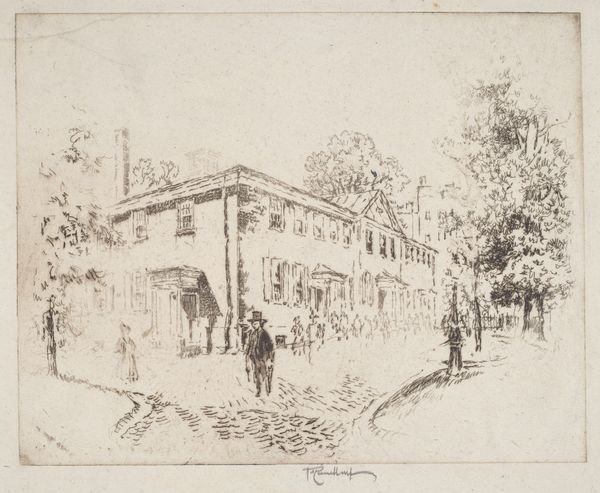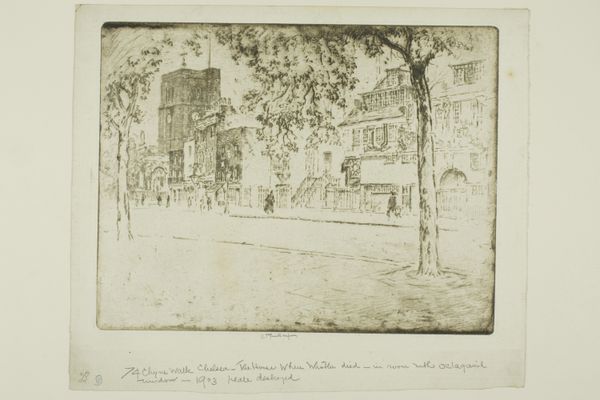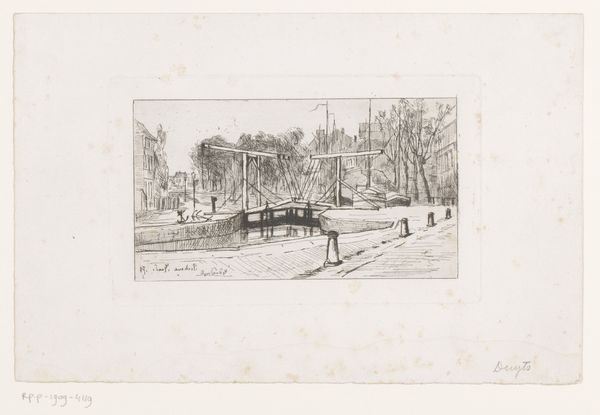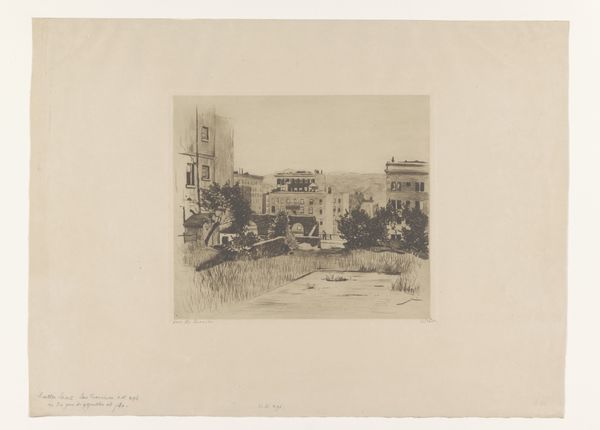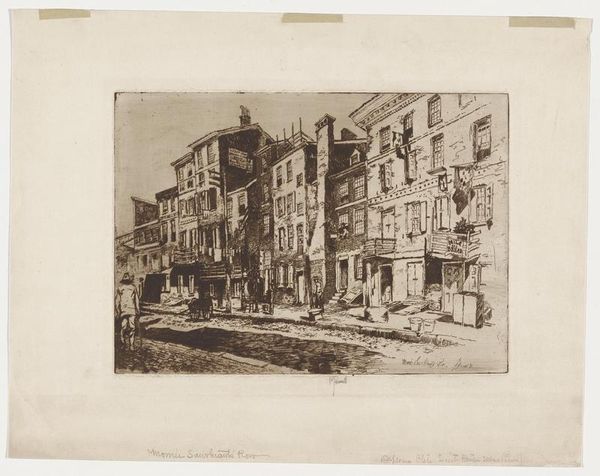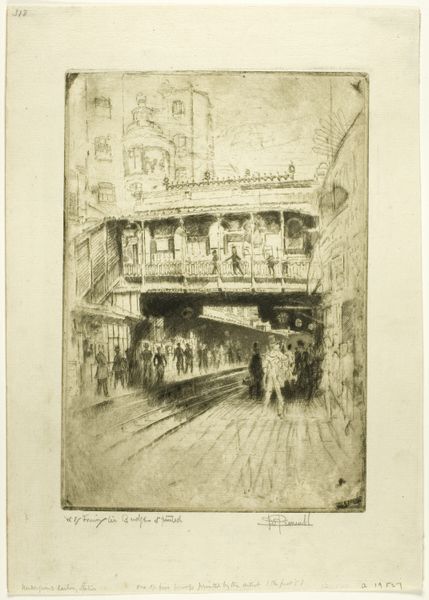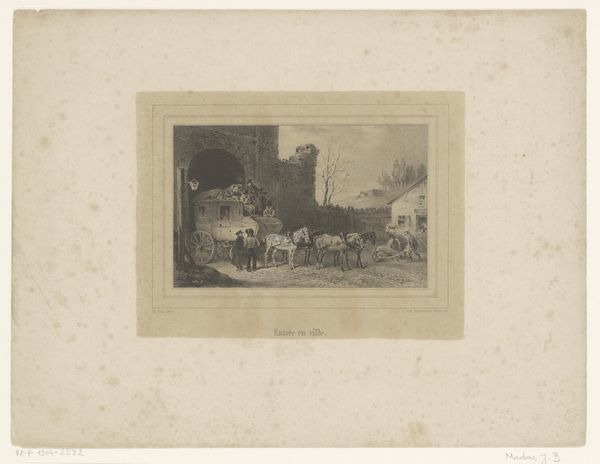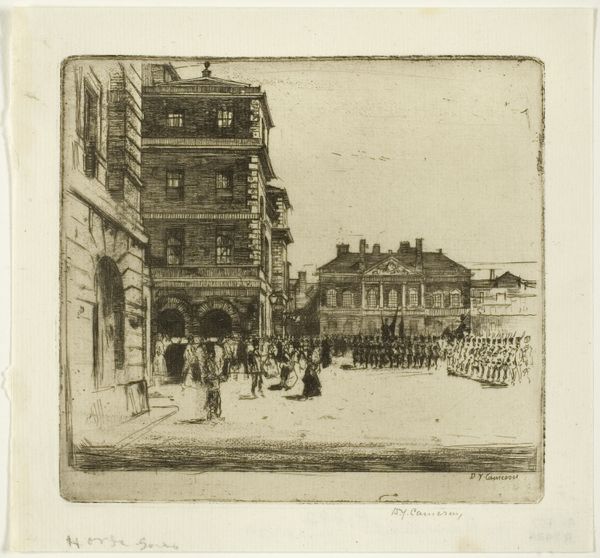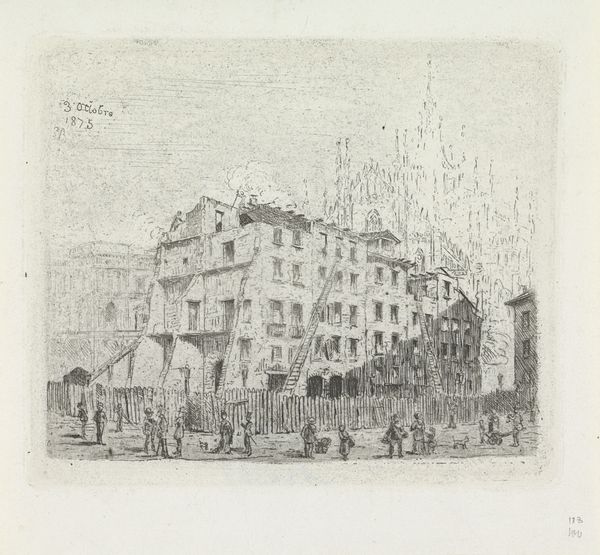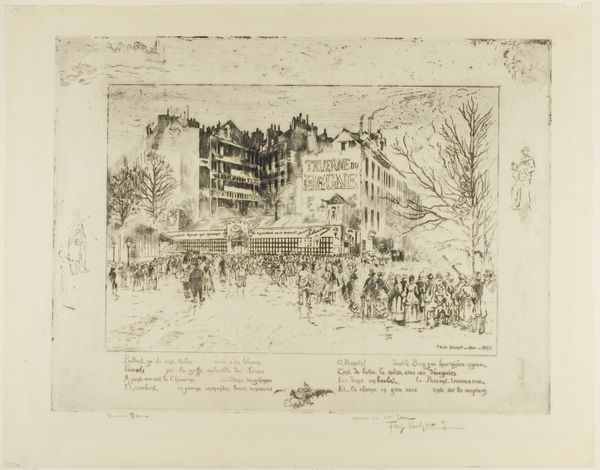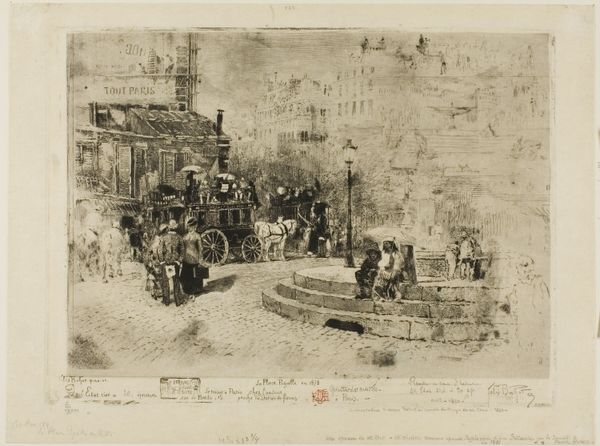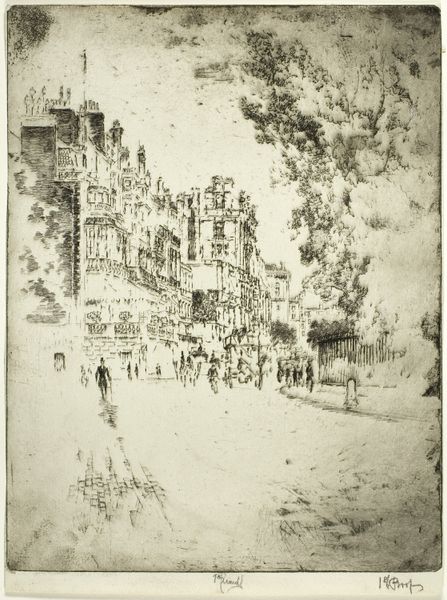
print, etching, paper
# print
#
etching
#
paper
#
cityscape
Dimensions: 204 × 280 mm (image); 241 × 346 mm (sheet)
Copyright: Public Domain
Curator: Welcome. We're looking at Joseph Pennell's 1906 etching, "Tyburn, The Motor Car," now housed at the Art Institute of Chicago. It’s a rather striking image rendered on paper. Editor: The overall feel is hazy, almost dreamlike. The light seems to dissolve the city scene, leaving the structures barely there. And that solitary car gives a distinct sense of speed amid all that atmospheric blur. Curator: The etching technique really captures a sense of modernity in flux. You know, Pennell was heavily influenced by Japonisme, and you can see it here—this flattened perspective, an emphasis on atmospheric effects over strict realism, recalls traditional Japanese prints. It mirrors a specific cultural moment where Western artists absorbed Eastern aesthetics to articulate modernity. Editor: Fascinating! Considering its etching—a printing process that democratizes image production, enabling reproducibility and broad circulation— it’s interesting to see this aesthetic decision rooted in mass production shaping ideas about urban progress. The etching medium would certainly allow Pennell to disseminate his vision widely. But what about Tyburn as a name; did that have some symbolism? Curator: Absolutely. Tyburn was historically a site of public execution. Pennell consciously invokes that dark history against the rising tide of the motor age. That motor car, this marvel of engineering, seems almost indifferent to the weight of the past. Editor: The contrast highlights how mechanized transportation was changing not only landscapes but also collective memory and its physical location. The shift from execution grounds to car-filled street certainly mirrors society’s shifting values. Curator: It invites us to ponder whether technological advancements truly erase our past or if they simply coexist, often uncomfortably, with the spectral echoes of what came before. The wisps of etching even evoke steam engines, an era in which social transformation always entailed both progress and destruction. Editor: I am left considering that the artwork allows a closer inspection into the socio-cultural implications that arrive together with each innovation: obsolescence and transformation. Curator: I find myself struck again by how effectively an etching of all things speaks about this particular moment, encapsulating society on the cusp.
Comments
No comments
Be the first to comment and join the conversation on the ultimate creative platform.
